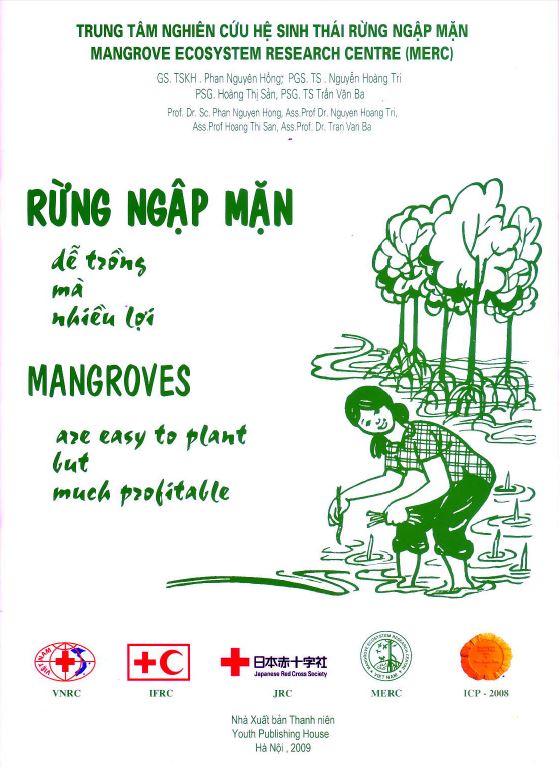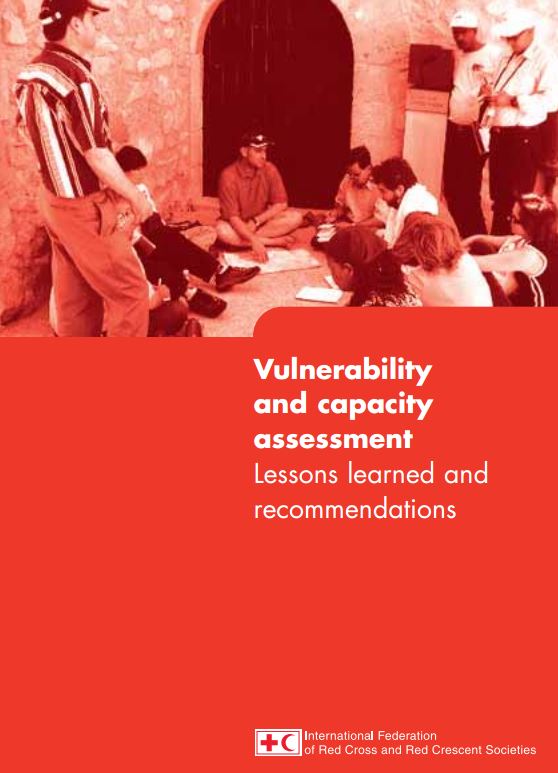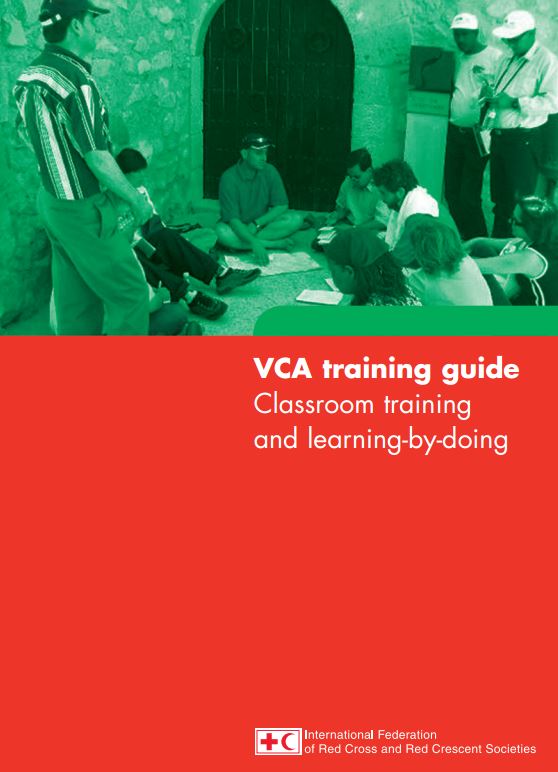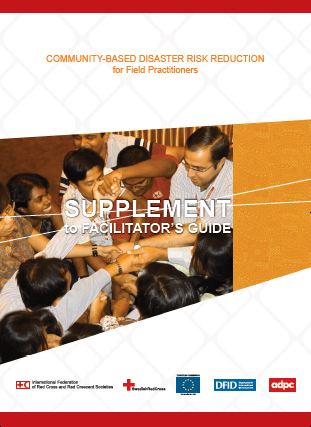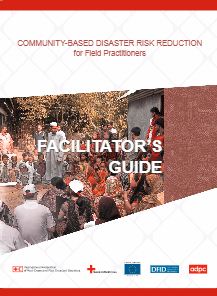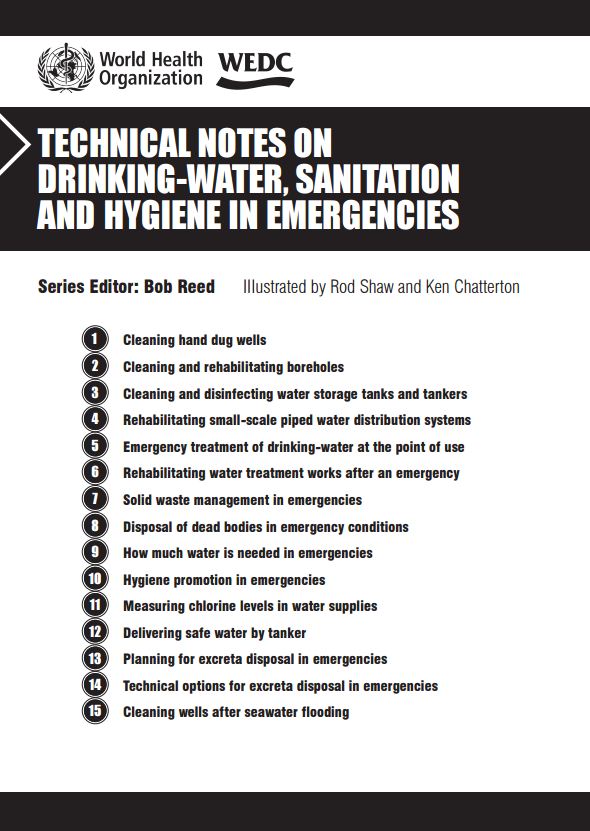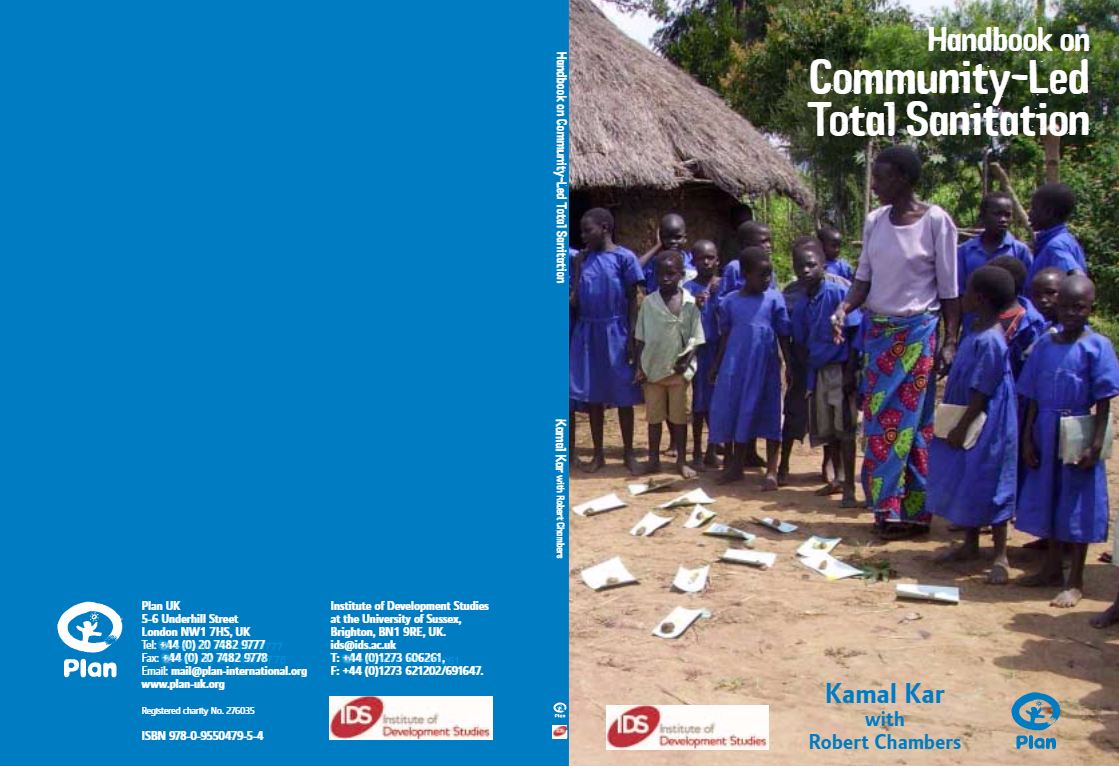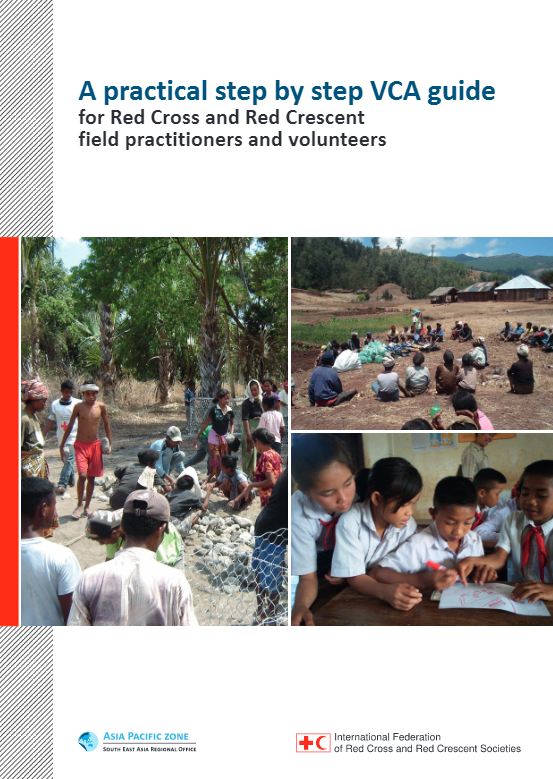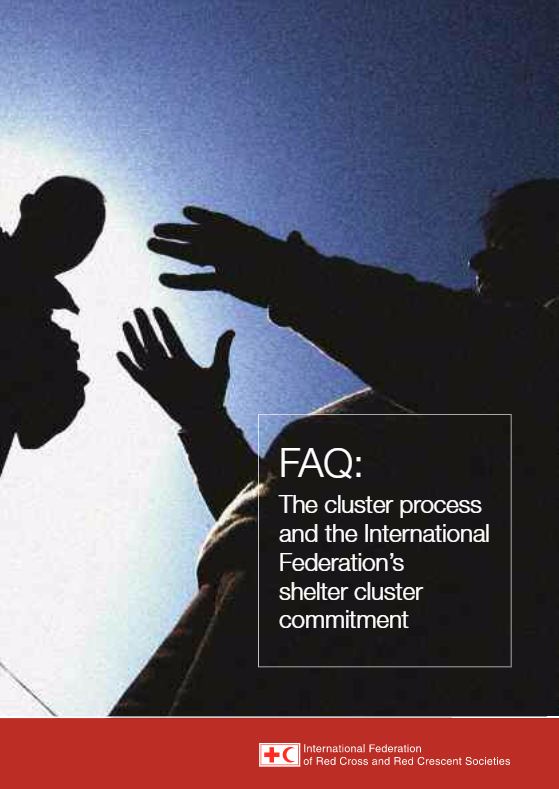Mangrove plantation is easy but many benefit
Purpose
This guidelines aims to raise awareness on how to plant, protect and manage the mangroves along coastal areas. This guidelines also promotes multiple benefits from mangrove plantation such as income generation, livelihood, dyke protection purpose and risk reduction.
Overview
The guideline was jointly developed by Viet Nam Red Cross and Hanoi National University’s Mangrove Eco-system Research Centre in 1997 during the “Mangrove and Disaster Preparedness Program” which was financially supported by Japanese Red Cross and Danish Red Cross. The program has made significant achievements and contributions toward poverty reduction, disaster preparedness and risk reduction in Viet Nam since 1990s and later on it was rewarded by the Viet Nam Government.
Usage: Guidance for Mangrove project implementation and management
Audience: RCRC leadership; technical staff and volunteers
![]()
VCA Lessons learned and recommendations
Purpose:
The lessons learned document describes the lessons learned, recommendation and good practice from National Societies.
Vulnerability and capacity assessment (VCA) has become widely used by many National Societies over the past ten years. Between 2003 and 2005, the VCA process was evaluated and revised by the International Federation’s secretariat. In 2005, a practitioners’ forum was organized to review and collect good practice and lessons learned.
Overview:
Community-based work has a very powerful effect on the National Societies involved. It is clear that VCA:
- often revitalizes the National Society at branch level, and sometimes at national level;
- changes people’s attitude towards the Red Cross Red Crescent in a positive way;
- frequently brings in more volunteers, who are often motivated to be “social volunteers” (i.e., without specific specialities);
- can alter relationships with government and other institutions in a positive way;
- brings more respect for and better integration of the Red Cross Red Crescent in the community, increasing the potential for better partnerships;
- makes the National Society realize that it can integrate existing programmes more effectively;
- can reduce the artificial barriers between work on health, first aid, water and sanitation and disaster preparedness;
- means the National Society becomes more capable of working with people rather than for them;
- helps fulfill the mission of assisting the most vulnerable people through the power of humanity.
On the other hand, it was noted that:
- VCA always raises the expectations of people in the community, so it must be matched by action and projects that meet at least some of these expectations soon after the investigation is carried out;
- more volunteers mean increased demands for training and integration that the National Society must meet;
- links with the political system are sometimes awkward: local politicians or even governments can hijack VCA in order to boost their own agendas;
- donors sometimes use VCA (and PCD) funding to pursue their own priorities rather than those of the National Society. As a result, National Society action may be diverted into activities that attract foreign funding for VCA and PCD, rather than focusing on their own priorities. This can increase dependency on donors, when in fact VCA should be about enhancing the participation and motivation of people in communities.
Usage: Guideline for implementation
Audience: National Society staff and volunteers
For the other series of VCA guides:
- For What is VCA? click here What is VCA?
- For How to do a VCA, click here How to do a VCA
- For VCA Toolbox, click here VCA Toolbox with reference sheets
- For VCA training guide, click here VCA Training guide
- For VCA practical guide step by step, click here English version size 5 MB, Burmese version size 4 MB, Lao language size 1 MB, Khmer size 4 MB
![]()
VCA Training Guide
Purpose:
The training guide offers instructions for training Red Cross Red Crescent staff and volunteers in implementing a VCA, through classroom training and more directly, through ‘learning-by-doing’.
The purpose of this training guide is to provide VCA facilitators with the necessary tools to train those who will be implementing the actual VCA. It is designed to enable volunteers with little or no experience of community-based participatory information gathering to complete a successful VCA, under supervision.
These are to be used along with the VCA toolbox, which sets out and explains the various research tools.
Overview:
The guide includes instructions and suggestions to help volunteers understand:
- the overall purpose of VCA;
- relevant terminology and concepts;
- means of working more effectively with communities;
- various information-gathering tools and techniques (i.e. group facilitation, accurate data recording, etc.);
- different methods for systematizing and analysing data.
The guide begins with a discussion of basic training themes. This is followed by two models of actual training courses: (1) classroom training and, (2) ‘learning-by-doing’. In both cases, explanations for each activity and specific facilitation techniques are presented. Cross-references are made to the other publications in the VCA series, to illustrate how various tools fit into the overall VCA process.
Usage: Guideline for implementation
Audience: National Society staff and volunteers
For the other series of VCA guides:
- For What is VCA? click here What is VCA?
- For How to do a VCA, click here How to do a VCA
- For VCA Toolbox, click here VCA Toolbox with reference sheets
- For VCA lesson learnt and recommendations, click here Lessons and recommendations
- For VCA practical guide step by step, click here English version size 5 MB, Burmese version size 4 MB, Lao language size 1 MB, Khmer size 4 MB
![]()
Community-Based Disaster Risk Reduction for Field Practitioners – Supplement for Facilitator’s Guide
Purpose:
The series provide the DRR practitioners with practical guidance on how to plan and implement community-based disaster risk reduction (CBDRR) programmes with a particular focus on training of CBDRR practitioners.
Usage: Guidance for project implementation
Audience: Technical staff, Volunteers
The CBDRR guides are available in series of:
- For CBDRR curriculum, click, Curriculum
- For CBDRR facilitator’s guide, click Facilitator’s Guide, size 7 MB
- For CBDRR Participation work book, click Participant’s Workbook, size 11 MB
![]()
Community-based Disaster Risk Reduction for Field Practitioners – Facilitator’s Guide
Purpose:
The series provide the DRR practitioners with practical guidance on how to plan and implement community-based disaster risk reduction (CBDRR) programmes with a particular focus on training of CBDRR practitioners.
Overview:
- Module 1: Introduction: Module 1
- Module 2: CBDRR – A framework for reducing risks: Module 2
- Module 3: Details of the CBDRR Process: Module 3
- Module 4: Documenting good practices and lessons learned in CBDRR: Module 4
- Module 5: Advocacy for sustaining CBDRR programs: Module 5
- Module 6: Next Step: Module 6
Usage: Guidance for project implementation
Audience: Technical staff, Volunteers
The CBDRR guides are available in series of:
- For CBDRR curriculum, click, Curriculum
- For Participation work book, click Participant’s Workbook, size 11 MB
- For CBDRR Training Kit, click Training Kit, size 6 MB
![]()
A practical step by step VCA guide for Red Cross and Red Crescent field practitioners and volunteers
Purpose:
The document is a guidance material that recommends a common regional approach to VCA. The idea was to adapt global International Federation VCA tools for the South-East Asian context to support National Society assessment processes through the development of regional guidelines, following the experiences of Red Cross Red Crescent and external partners, it aims to guide National Societies in conducting VCA and adapt the VCA process to their own countries.
One of the challenges faced while formulating and implementing the project or program is that VCA results are not well integrated and adopted as a sustainable developmental plan for communities. In addition, a lack of community participation hampers the best use of community knowledge and materials in implementing VCA. Some key lessons learnt from the implementation of VCA in the last several years are defined here for consideration before, during and after rolling out VCA in our region.
Overview:
The lessons learnt from the practices from the National Societies in Southeast Asia:
A. Integration and mainstreaming
- National Societies should develop clear objectives at the beginning of the VCA process and ensure they are fully communicated with all levels, especially at the community level with National Society volunteers, villagers and local authorities.
- Indonesian Red Cross (PMI) incorporated VCA into its integrated community-based disaster risk reduction programme as an assessment tool or entry point. Risk analysis and hazard mapping, which are component of VCA, can help identify highrisk communities where a disaster risk reduction project could be initiated.
- VCA results should be integrated into not only disaster management, but health and care and organizational development (volunteer development).
- VCA results have been shared with different stakeholders inside and outside the International Red Cross and Red Crescent Movement, especially local government, which has aided integration. For example the Cambodian, Indonesian and Viet Nam Red Cross Societies included the local authorities in the process.
B. Advocacy
- VCA should be advocated to National Society leaders to gain their support in terms of policy, and human and financial resources.
- More advocacy at different levels can link VCA results with a community’s overall socio-economic development plan.
C. Project/programme design
- Involve the right people. For example, in the PMI a core team set up VCA including a task force with knowledge and skills in VCA to train SATGANA (disaster preparedness and response teams) at district branch level. Then SATGANA provided training for village-level community-based action teams on how to conduct assessments using VCA as a tool.
- Coordination among different National Society departments/divisions such as disaster management, health and organizational development should be taken into consideration to VCA can be better integrated into National Society programmes. Ideally, the VCA should be done jointly with other departments/divisions.
- Most VCAs are done on a project basis only. For a longer term effect, National Society strategic plans should include VCAs and longer-term interventions in high risk communities.
D. Capacity building
- To empower of the community, VCAs should maximize the use of community resources, participation and commitment in whole process. To ensure ownership by the community, there must be genuine community participation from project design through to monitoring, reviewing and evaluating.
- It is important to involve members of the community from the start of the process to build their capacity to take further actions to reduce their risks and vulnerabilities, and to build safer and resilient communities. This means “working with them rather than working for them”.
Usage: Guidelines for implementation
Audience: National Society staff and volunteers
For the other series of VCA guides:
- For What is VCA? click here What is VCA?
- For How to do a VCA, click here How to do a VCA
- For VCA Toolbox, click here VCA Toolbox with reference sheets
- For VCA training guide, click here VCA Training guide
- For VCA lesson learnt and recommendations, click here Lessons and recommendations
See also this document in: Burmese version size 4 MB, Lao language size 1 MB, Khmer size 4 MB
![]()


